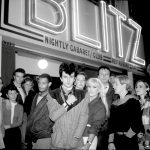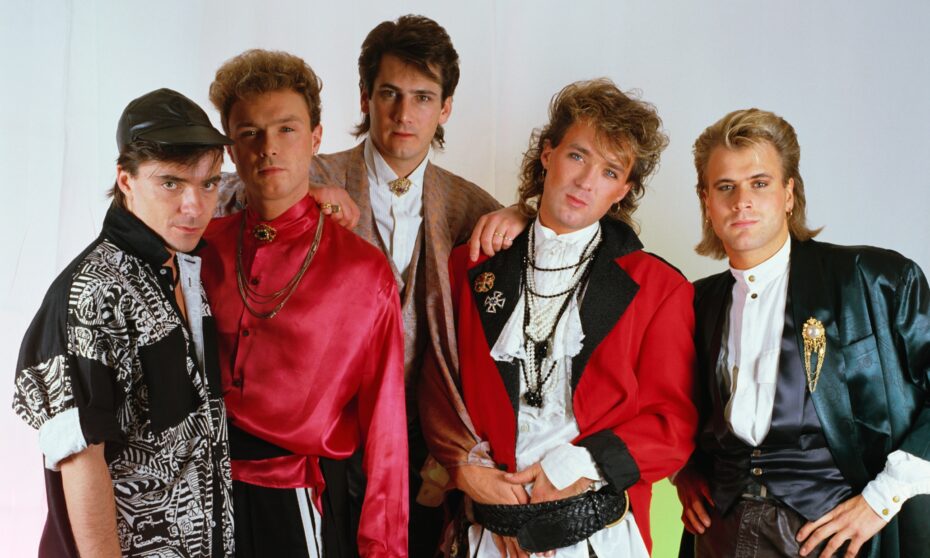
The swashbuckling frilly shirts, waist-cinching belts, man brooches, contouring make-up, jodhpurs and jack boots – was Spandau Ballet the most underrated fashion statement of the 80s? Outside of Britain (and the 1980s) the obscurely-named band might stand in the shadows of their rivals Duran Duran, but here’s why Spandau Ballet deserves a far more significant space in your vintage reference library…
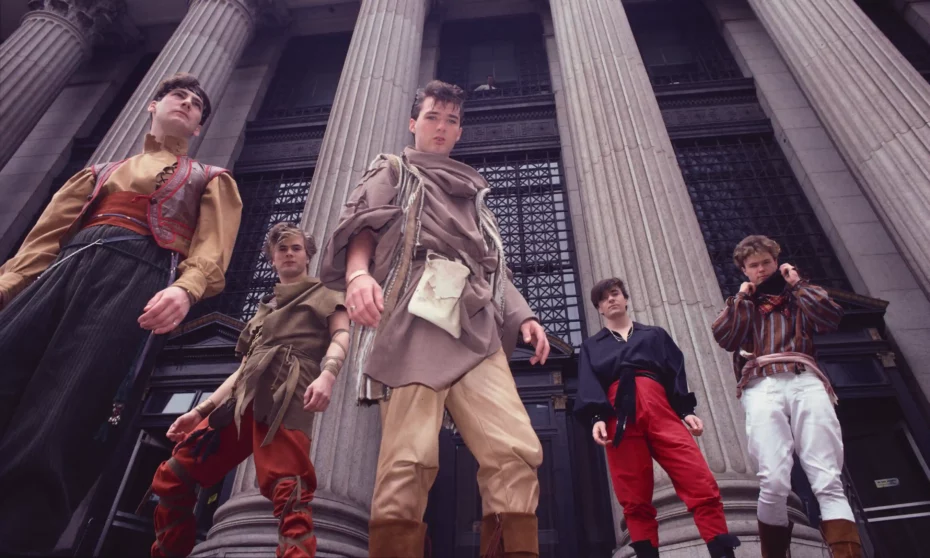
London, the eternal arts and musical melting pot, had been boiling since the 1960s. Punk had demolished the rock establishment in the late 70s but would in turn be usurped by a cultural and artistic movement called the New Romantics – a renewed burst of glowing youth; a more theatrical, flamboyant, and glamorous alternative; driven by aesthetics and not politics. The punks sprouted in the cold and comfortless late 70s of power cuts and soaring inflation, while the New Romantics were born from Thatcher’s respondent deregulation. Spandau Ballet helped usher in that movement, and became emblematic of the New Romantic scene, characterized by decadence, and androgyny, often blurring traditional gender boundaries in their style choices.
Music Television (MTV) exploded post-punk, offering the full package of music and video. Fashion-conscious musicians were the eye candy that enriched TV screens, and the likes of Adam and the Ants and Human League were the renaissance master artworks of the day: exotic portraits and fantastic landscapes dancing and pulsating into the dull bedrooms and living rooms of a new generation.
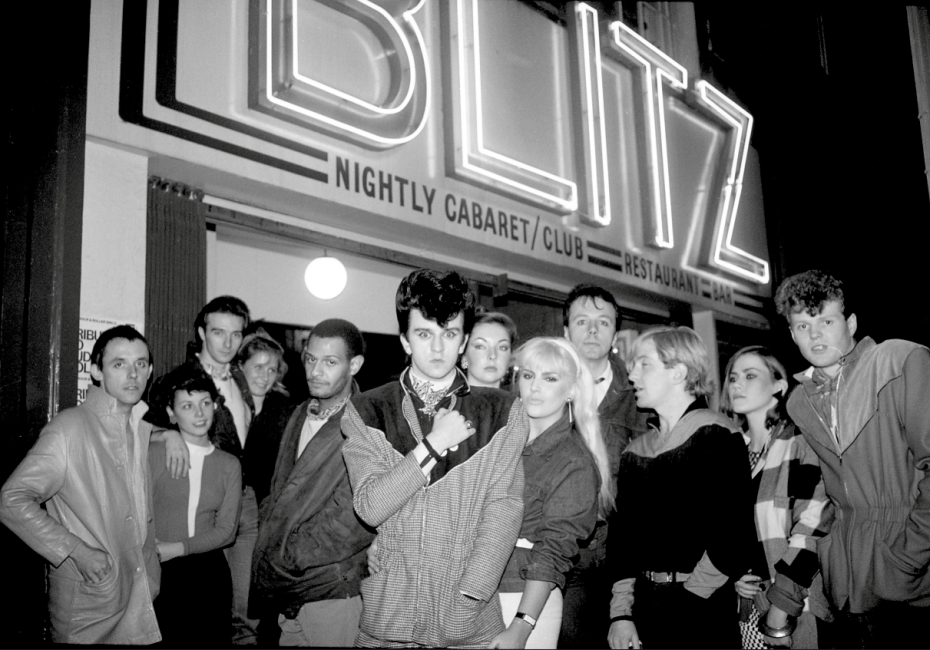
New cult nightclubs like The Blitz and Billy’s popped up in London, inviting and insisting on outrageous attire, showing a finger to old-school social and gender roles.
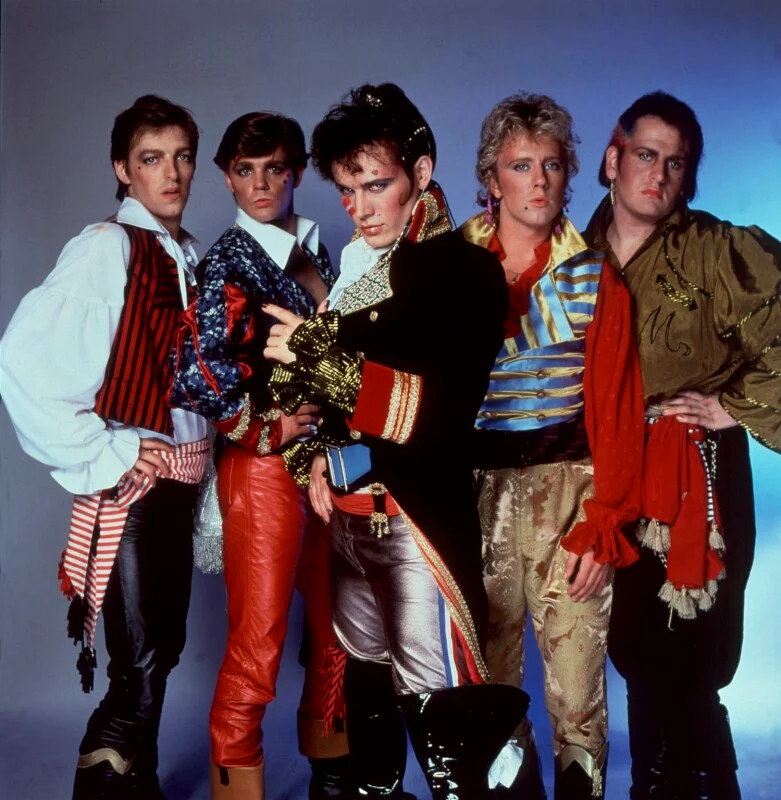
The ‘new (80s androgynous) man’ drew inspiration from 70s Bowie, dandyism and glam rock, and despite the dire straits of youth unemployment that plagued daylight hours, night-time was a totally different animal – the city clubs were pumping. Nightclubs celebrated a new explosion of electronic and synthesized music, technologically advanced and complete with state-of-the-art lighting and superior quality sound mastered by DJs. These late night spots were the places to meet people and be seen, here subcultures were born and nurtured.
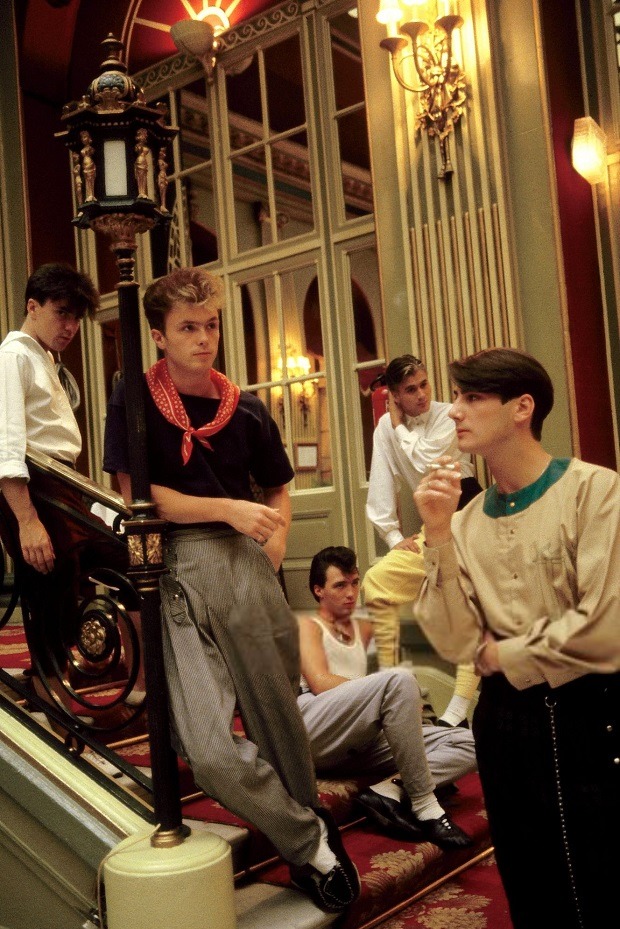
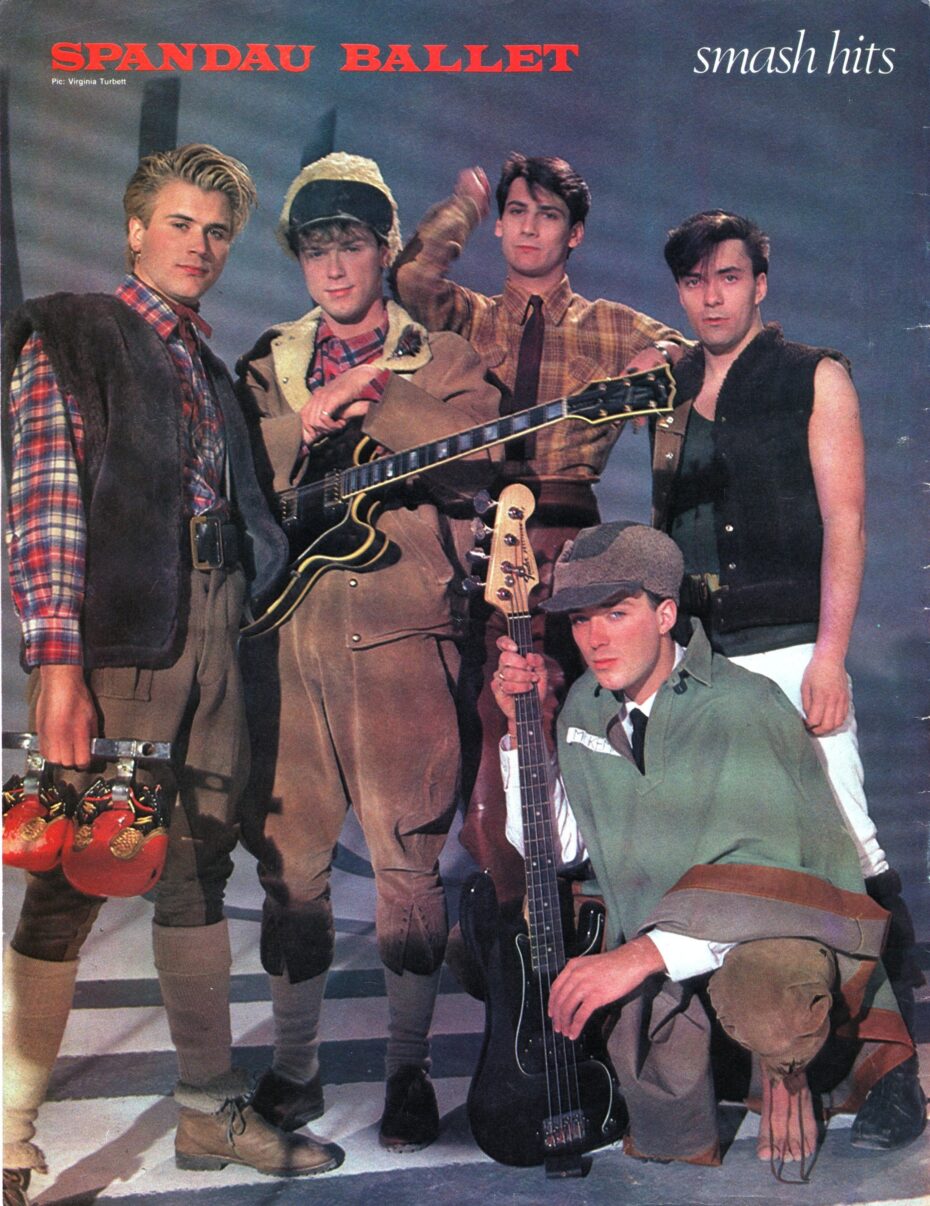
Photograph: Virginia Turbett/Redferns
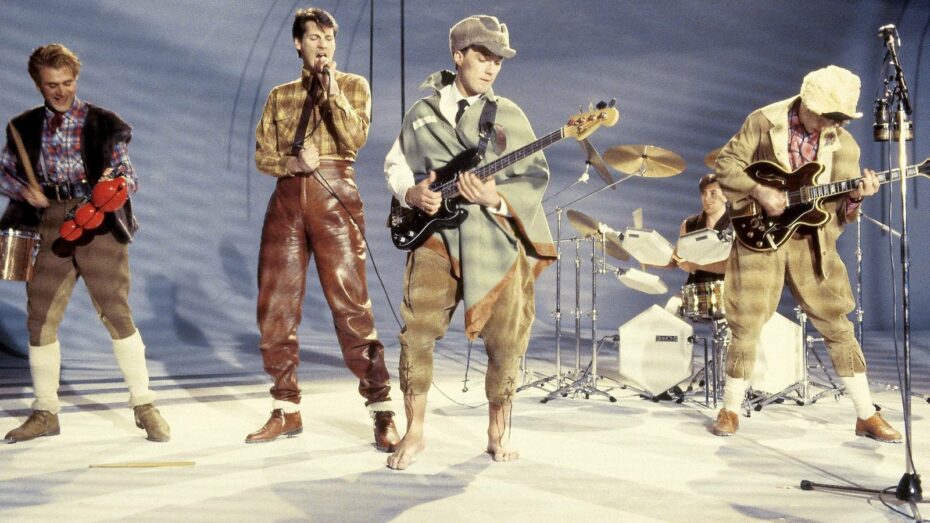
Born from this heady mix was Spandau Ballet, a London (Islington) music and fashion fusion band who would bring the world great love songs like True (1983), Through the Barricades (1986) and Gold (1983), but also pioneer the new aesthetic. As for the name, so rich and so apt for the confused times, was taken from the ridiculous imprisonment ritual of Rudolf Hess in East Berlin, perpetuated by the failing Soviet states.
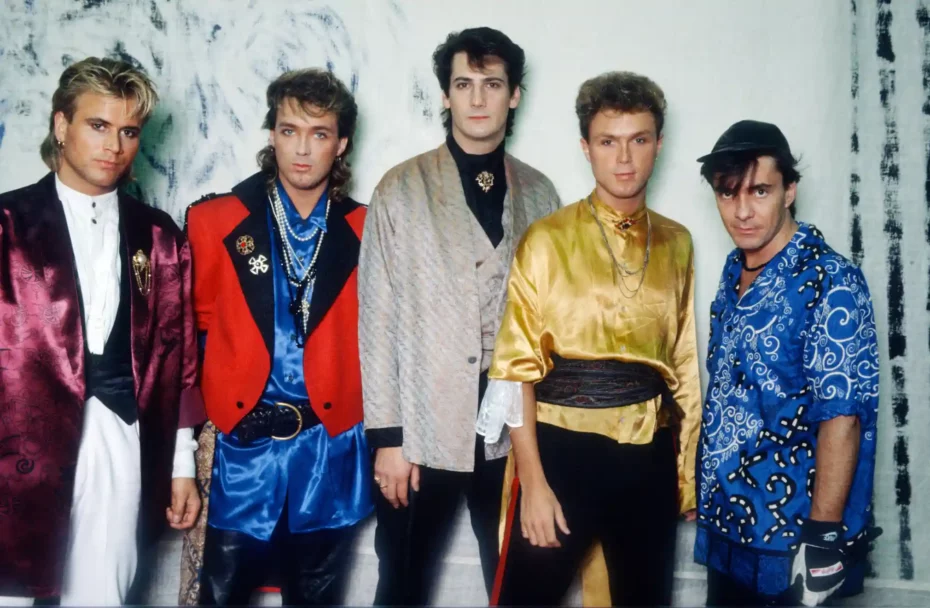
Spandau Ballet, bedecked in their eclectic outlandish attire, were the ultimate fit for the zeitgeist of the early 80s. Formed in 1979, they soon became the house band for the Blitz kids club culture. Inspired by music guru Steve Strange, they embraced the post-punk world of the English electronic dance music scene. At the Blitz, the Spandau boys – brothers Gary and Martin Kemp, lead singer Tony Hadley, Steve Norman and John Keeble – not only spent their time penning their now-legendary tunes, but also crafting those ever-so-cool looks. Together with the likes of Duran Duran, Culture Club and Wham, they would lead and dominate the world New Romantic music high art project.
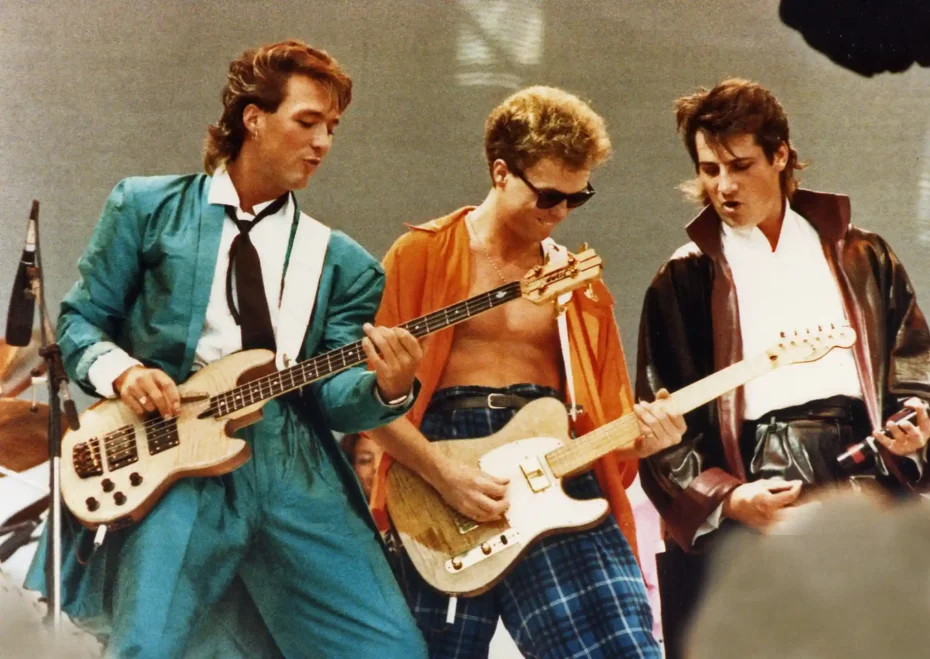
They were a mad mix of Vivienne Westwood in her most fertile of fashion periods (see the Pirates Collection, 1981), Boy George in his oversized dust coasts and copious quantities of make-up and early John Galliano. Spandau Ballet’s lead guitarist, Gary Kemp is said to have bought a frilly shirt from a pre-Dior John Galliano, but it was such an early design that his name was handwritten on the collar. Kemp, a man with ridiculously good dress sense, and who is generally regarded as the driving force behind Spandau Ballet, attributes his fashion-forward intuition to his father, a teddy-boy rock ’n’ roller, who allegedly spent all his spare cash on cool gear, recalling; “your education wasn’t your statement; your job wasn’t your statement; your clothes were your statement”.
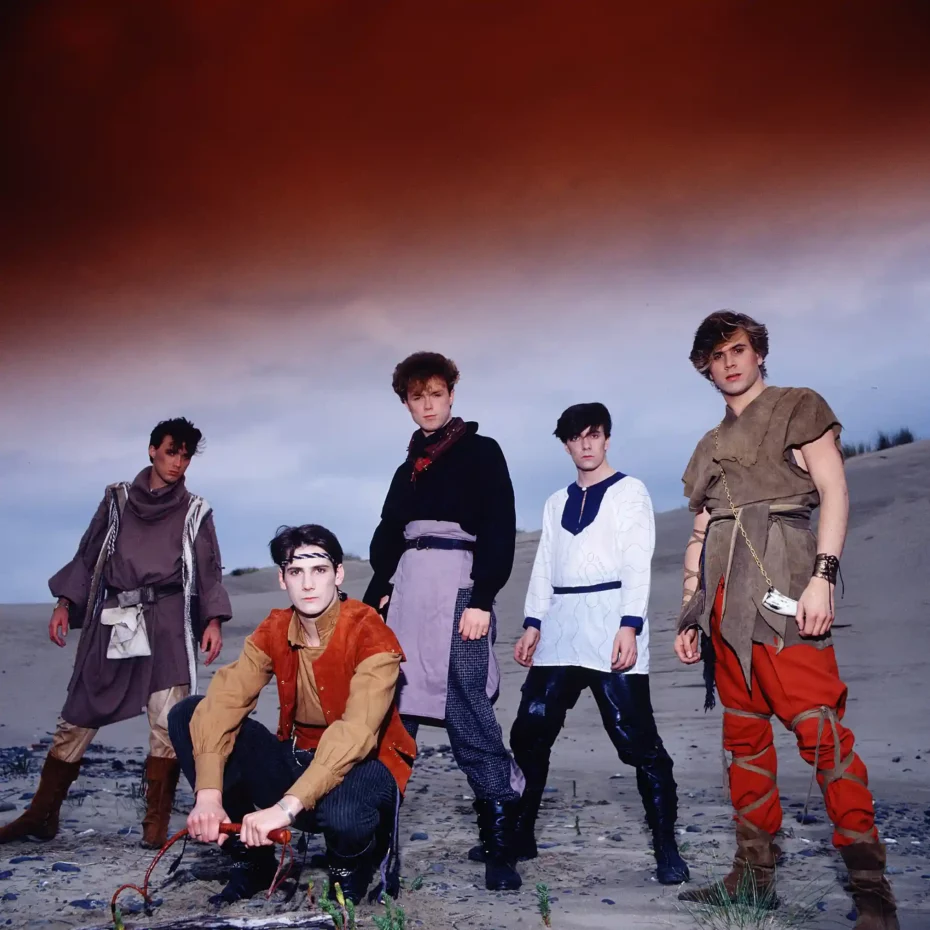
What Westwood did for the Sex Pistols, Kemp confessed David Bowie in his Glam Rock days did for Spandau. The androgynous Ziggy Stardust was the cardinal inspiration for Spandau Ballet’s clobber, but trouble was, it was such an exotic mix-and-match style that the complementary pieces couldn’t readily be bought from standard retail stores. So the band members raided their mothers’ wardrobes and charity shops. Kemp asked his mother, a seamstress, to make outfits for him, she needed to make him look like Bowie. He cut his hair and put on some make-up … et voila!
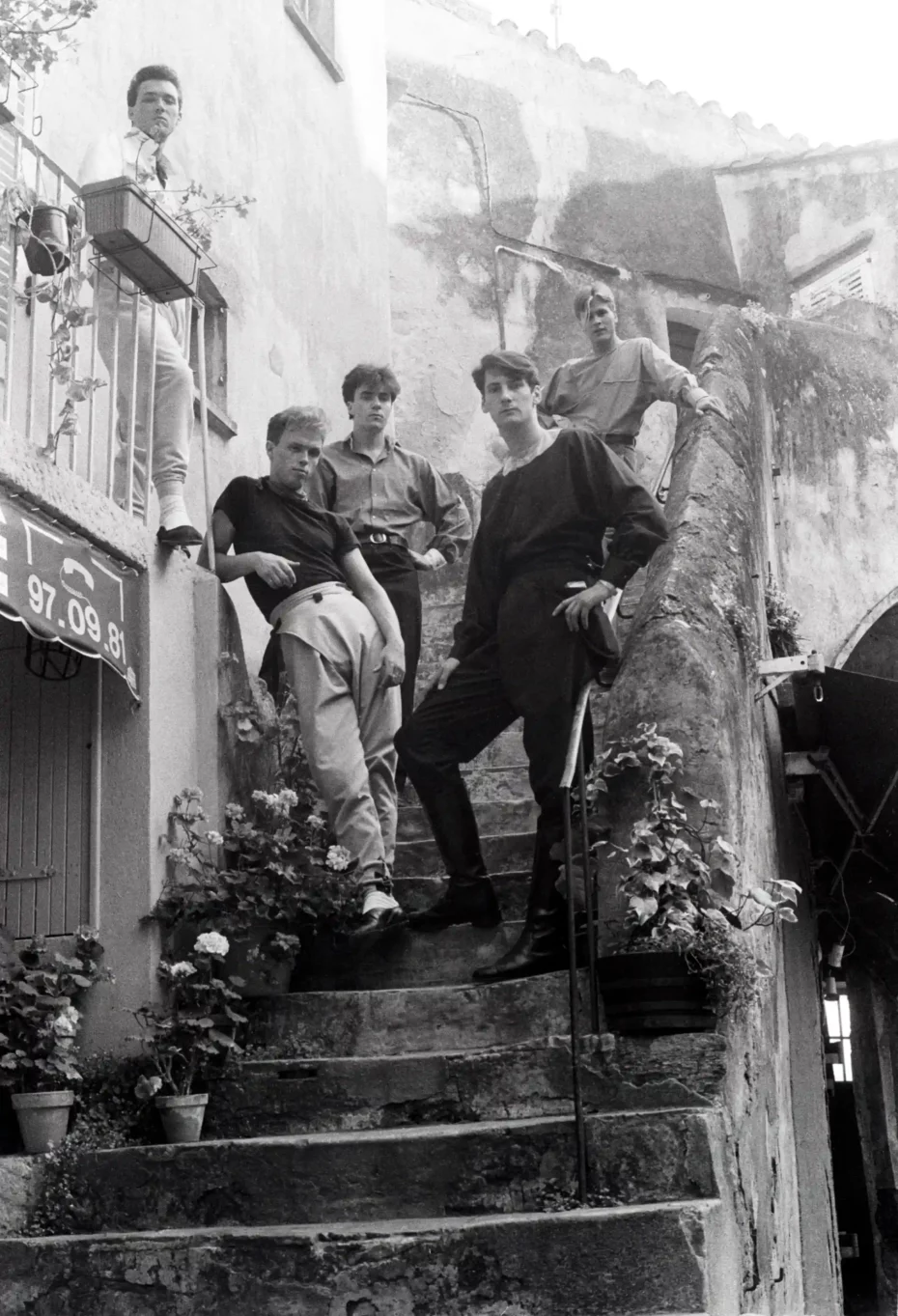
Spandau Ballet’s unique cocktail of homespun style offered a universal gender-fluid look that, for a few quid and a little imagination, the fans could emulate. Gay or straight, middle or working class, art student and professional – all could be part of this new wave of outrageous fashion. Every time Spandau Ballet stepped on stage, the high street took note. Young cutting-edge designers copied their looks and even Princess Diana wore pie-crust high-collar shirts and knickerbockers, a combo made famous by the band. The likeminded crowds lapped up the fashion inspo and funky pop. Worldly success tamed the band’s outward expression and during the band’s True tour (1983), the look became somewhat more dressy and less experimental – as did the musical output.
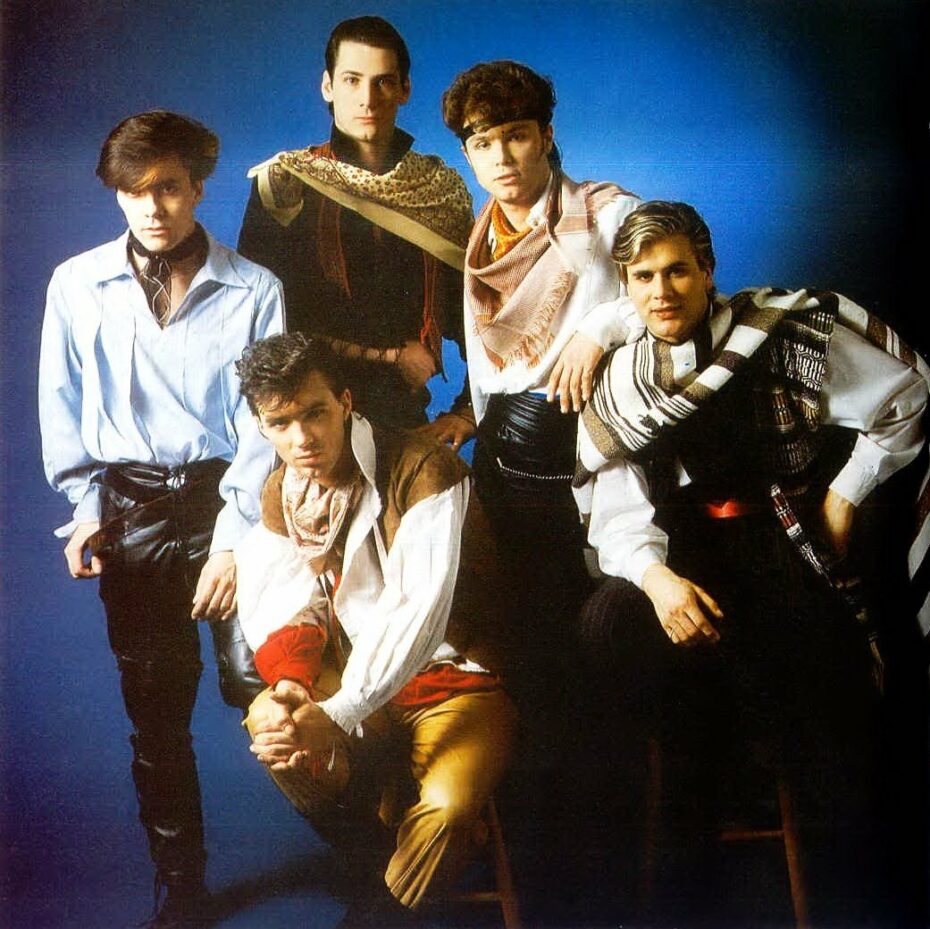
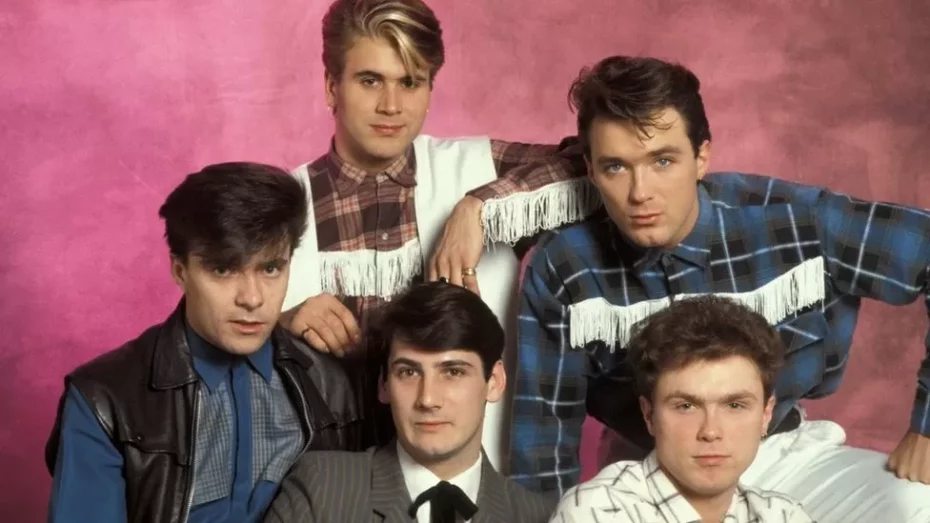
Inevitably their ‘radical’ style became mainstream and the band moved onto to explore other looks. Gary Kemp says in a documentary made of the band, Soul Boys of the Western World (2014), “suddenly the high street was full of the New Romantic look – even Topshop was selling ruffles, piecrust collars and knickerbockers.” A period followed where they performed in zoot suits made famous by jazz musicians in the 1930s. As the band enjoyed success and toured more, the looks changed again, to an ‘80s Baroque-style’ of rather expensive-looking, lavish & luxe (often leather) wide-shouldered suits – perhaps a reflection of an economy that by the mid 80s was overheating.
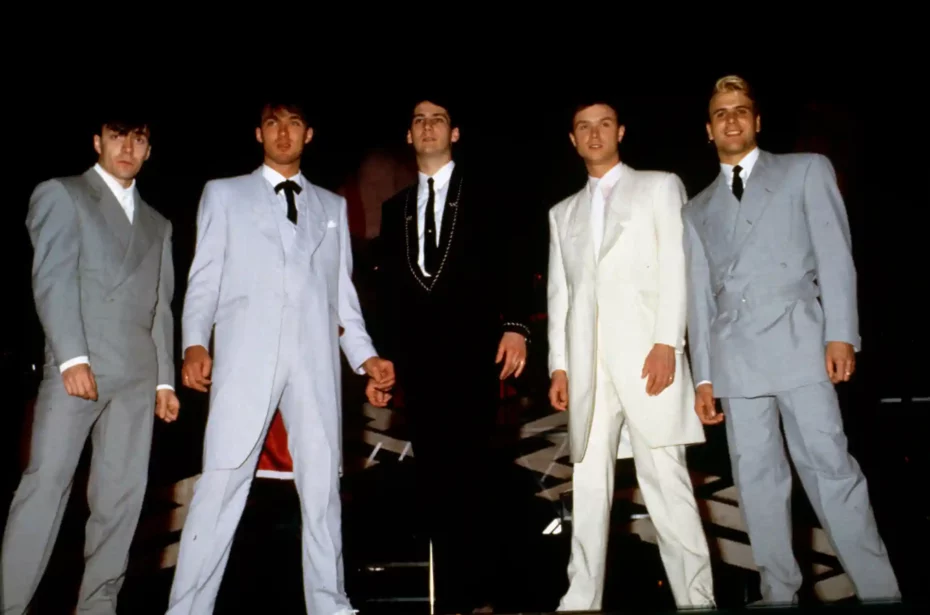
The Parade tour (1984/5) saw them perform in satin and brocade frock coats with oversized shoulder pads, the sleeves of their silk shirts lace-trimmed, their cummerbunds cinching their waists, pearl necklaces and ornate brooches topping off the lavish looks. It was around this time, too, that the band was invited to take part in the famous Live Aid at Wembley Stadium (1985) and double leather ensembles – trench coats and matching trousers – were definitely a thing. Another milestone in their style journey progression in the late 80s was dressing all band members in monochrome – a style routine that would be emulated by many a boy band of the 90s.
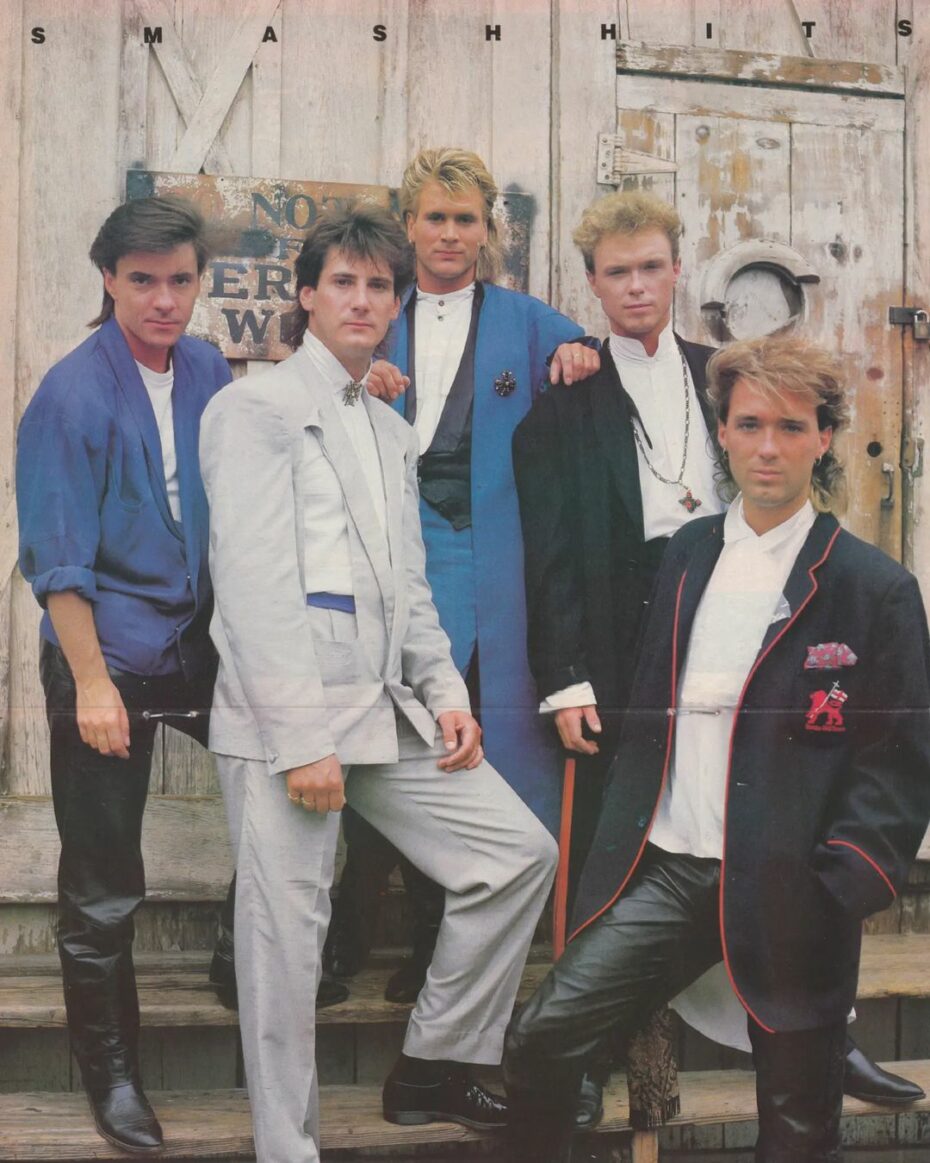
The avant-garde Japanese and French fashion houses of the 1980s, the likes of Yohji Yamamoto, Comme des Garcons and Jean Paul Gaultier, promoted and fed off the New Romantics’ imagery, creating exquisitely tailored high fashion, genderless clothing. This dress code was truly the wearable art of the 80s – appreciated, promoted and worn by the band.
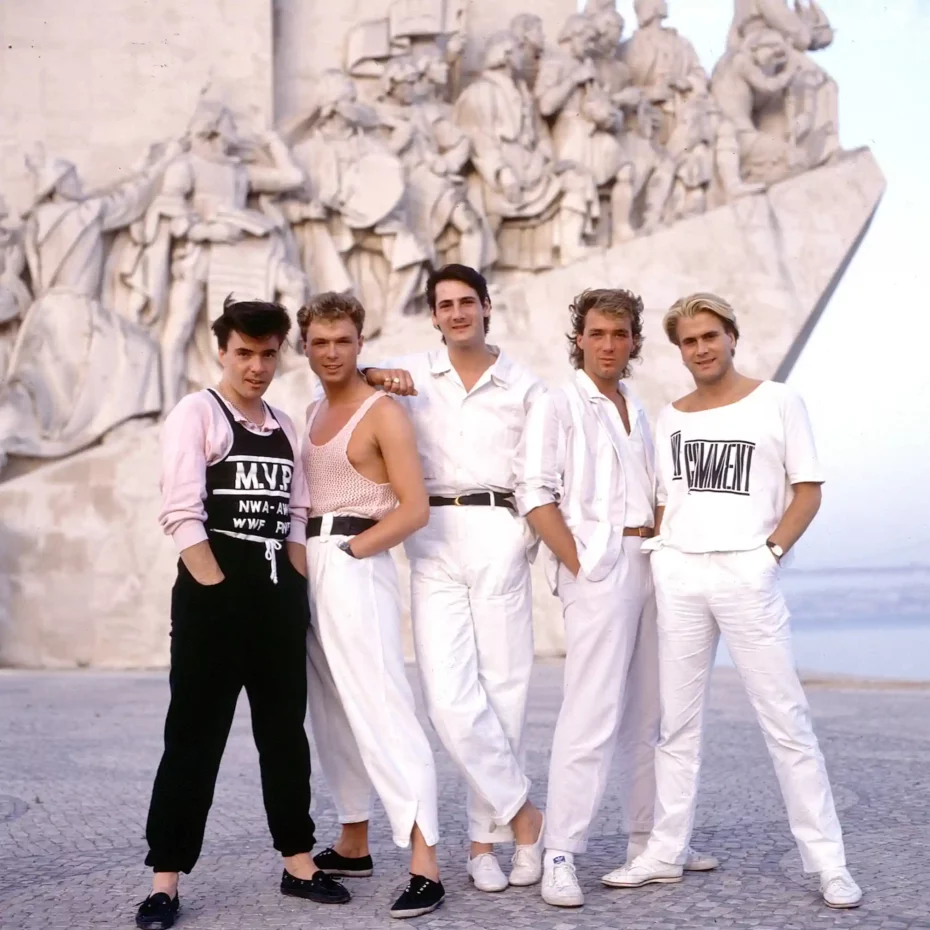
All things must pass and indeed Spandau Ballet had their gregarious and glowing 80s summers. The world was again changing, the exuberance of the 80s gave way to the more practical 90s, things had dulled, economies calmed and the age of the artful New Romantics passed. The curtain finally fell on the real Spandau Ballet with the death of Rudolf Hess in 1987. The new decade ushered in yet another new generation with its own identity.
Watch the full documentary Soul Boys of the Western World here.




